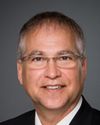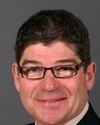First to comment on that, I think there are many factors, as you said. One of the factors is definitely long lineups and congestion at voting stations, and certainly having a second day would have an impact on that.
I did want to raise one concern I have, which has to do with the integrity of the ballot boxes. I noticed in your presentation, on page 8, you talk about perhaps the polling boxes returning to the deputy returning officer's home. My concern is that ballot box integrity is very important. There's a whole process in place to ensure ballot box integrity, whereby it's verified that the box is empty, scrutineers can verify that it's empty, and then it's taped, the day starts, and it's taped at the end of the day, etc.
I also heard in your presentation that you'd like to see—not in its detail—the advance day just before the election day and the election day being together, and perhaps all ballots going into the same box. I've got a real concern with this idea of the ballot boxes going back to the deputy returning officer's home, particularly how it looks to the eyes of Canadians. There are always reports and rumours about things that happen on election day, and certainly in the public's perception, these being in people's homes is a huge cause for concern.
I'm wondering if you have other practical solutions. I'm thinking of one in which you have two separate ballot boxes. You have a ballot box for this advance day, and it's treated like an advance poll ballot box: it's taped, it's sealed, and it goes back to Elections Canada. On election day you've got your election day ballot box at the same poll, but it's a separate box; it goes through a separate verification process, etc. I wonder if you could comment on that.





